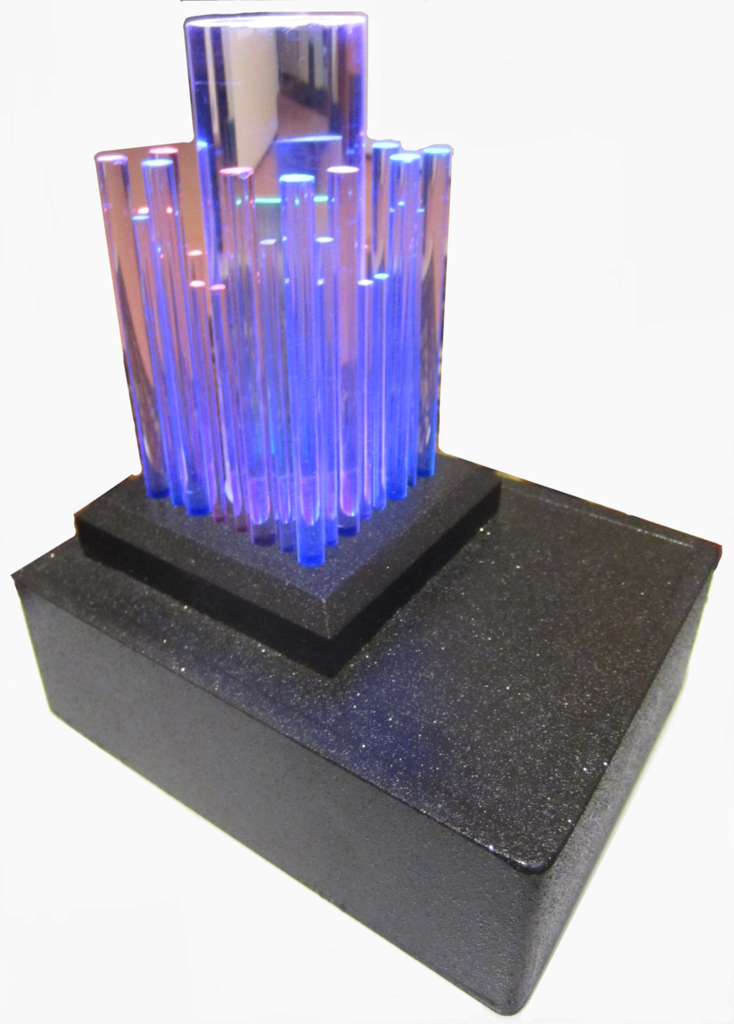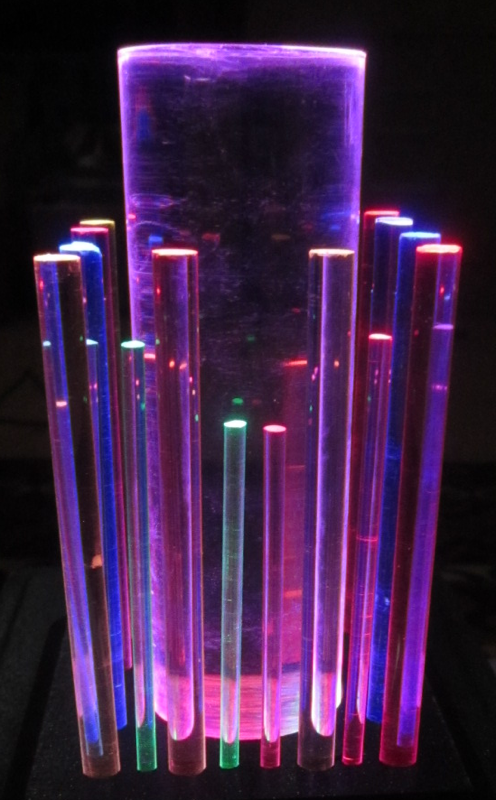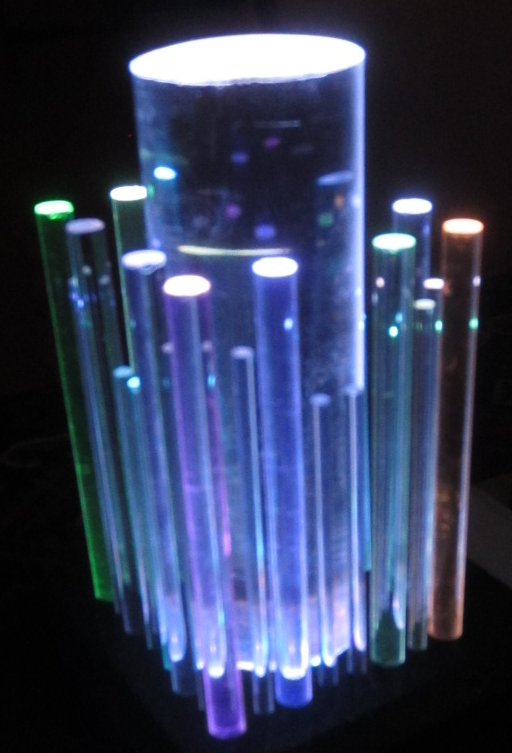
Eight P channel FET row drivers are positioned along the left of the 8x8 RGB LED Matrix.
Note that the 8x8 matrix contains 64 RGB LEDs which equates to 192 individual LEDs that are controlled by this hardware.
The HC-05 Bluetooth module is on the left, the Adafruit 24 Channel PWM driver is in the middle and the Teensy 3.1 micro controller is at the bottom.
All of the components were connected together using point to point wiring on the bottom of the breadboard.

Three different diameters of acrylic rods are used. The rods pass through their wooden support to rest directly on the LED matrix mounted horizontally within the case.
The rods convey the light from the LED matrix up through themselves lighting their ends brightly.
The case is made from 1/4" MDF and painted with sparkle black paint.
A USB cable enters the case from the back so it is not visible here. The cable plugs onto the Teensy micro controller which then powers all of the components. A USB power module producing 5 VDC at 1 amp powers the Crystal Palace.


Still imagery just doesn't show how pretty the Crystal Palace really is.
